(click here to read page in Chinese Language)
Food and drink in Italian Tradition
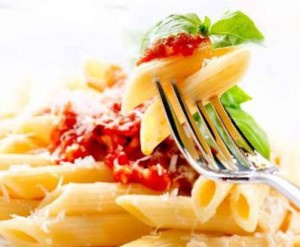 Italian cuisine has a long tradition and a development that spans through centuries and has been influenced by various cultures. Some of its main ingredients have also different geographical origins, like the tomatoes and potatoes for example, derived from the discovery of the Americas. Besides dishes and their respective receipts, Italian food is rich of variety also in bread, cheese, wines and other elements of meal. In this guide you will find an overview of these differences and typical foods.
Italian cuisine has a long tradition and a development that spans through centuries and has been influenced by various cultures. Some of its main ingredients have also different geographical origins, like the tomatoes and potatoes for example, derived from the discovery of the Americas. Besides dishes and their respective receipts, Italian food is rich of variety also in bread, cheese, wines and other elements of meal. In this guide you will find an overview of these differences and typical foods.
A typical Italian meal can have several courses, and is usually as follows:
- Starter/appetizer: usually based on a mix of Salumi, which are Italian cured meat products, and cheese, or rather based on sea food, both with a side made by oil/vinegar preserved vegetables and usually named as ‘earth starters’ or ‘sea starters’ according to their main ingredients
- First Dish: the typical Italian first dish is a pasta recipe, with so many variations in pasta types/shapes and sauces/condiments to make a nearly infinite list of recipes, usually grouped according to the geographical area of the peninsula (North/Center/South and ‘regions’); inside first dish recipes pasta is usually mixed with legumes, vegetables, meat or fish, and may contain dairy products, salumi or eggs
- Second Dish: Italian second dishes are usually divided in the two main categories of ‘meat’ and ‘fish’, with a great variety of combinations, cooking processes and the addition of eggs, bread crumbs or flour in the pre-cooking phase; also, some second dishes can have vegetables as main ingredients
- Side dish: side dishes are usually based on seasonal and local vegetables and legumes, but of course even the simple potatoes can be prepared with several variations
- Cheeses and/or ‘Salumi’:usually, if not included in the starter, dairy products and/or Salumi are used as an addition to the main dishes, often served on a wood cutting board
- Sweets/Pastry: one of the most appreciated element in Italian food are sweets, with delicious variations according to the geographical areas, and they’re usually served at the end of a meal, together with fruits
- Fruits: usually local/seasonal but also mixed with exotic varieties, fruits are served as whole or in fruit salads
- Coffee: the typical Italian espresso coffee is always found at the end of a meal, although some foreign people prefer a cappuccino that becomes sort of a dessert
- Amaro/Grappa and other Liquours: Italians call these liquours ‘coffee killers’, as their taste overwhelmes the one of the espresso; being bitter liquors, Amaro’s main role is to ease digestion but they’re appreciated for their particular flavours, while sweeter traditional liquors like Limoncello, Nocino or Finocchietto have recently become popular as digestive end-of-the-meal drinks.
The typical drinks you find in Italian meals are:
- Wine
- Beer
- Water
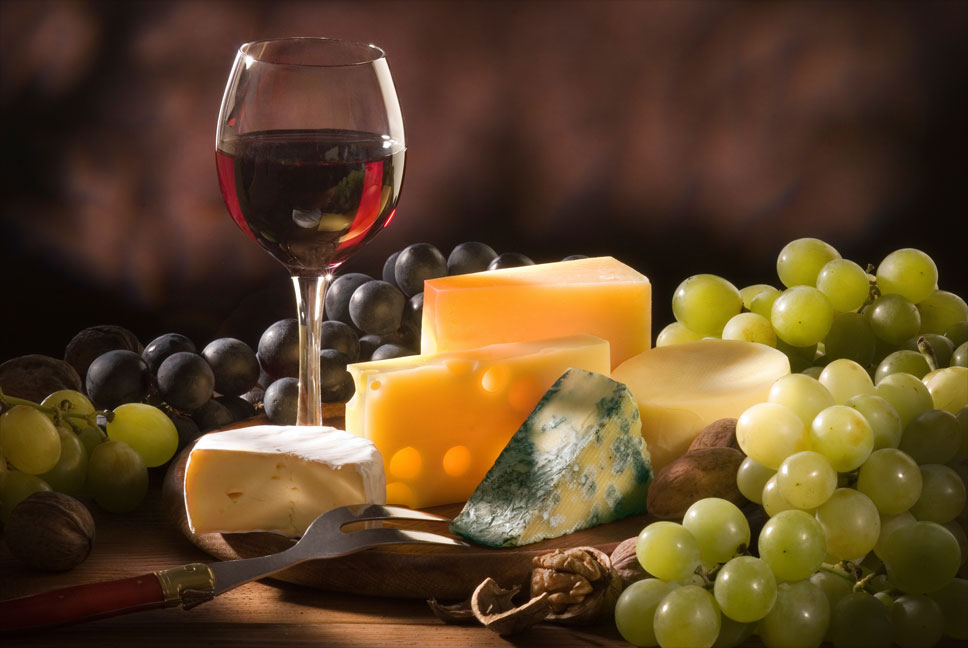
Food and wine in Italian regional tradition
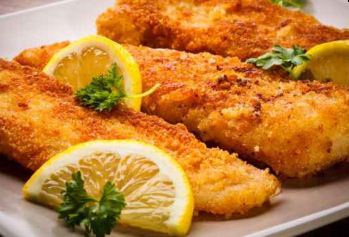 During history, the influence of tradition, social conditions and climate upon the evolution of local Italian cuisine have defined a series of typical food choices which greatly transformed from North to South and from the inner areas to the coastal ones, considering the fact that Italy has 20 regions. Also, the traditions of foreign countries have influenced Italian regional cuisine both during historical ‘invasions’ and, more recently, for geographical influences by nearby countries. Even today, while the northern regions have a rich tradition of second dishes based upon meat and first dishes based on soups and “risotto”, the southern regions first dishes are rich of pasta with tomato sauce or legumes and second dishes are rich of vegetables and fish. Also, for example, dairy products vary from North to South, respectively with sweeter cheese and more ‘spicy’ cheese products, for example the ‘provolone’ or the ‘pecorino’. The same happens with sweets, that in the southern regions are more ‘rich’ in their ingredients, like the Sicilian ‘cannoli’ or the Neapolitan ‘pastiera’. In modern times Italian cooks working in every area of Italy took with them all the different regional recipes, but it’s still more easy to taste better regional dishes in the specific are of their origin. Finally, it’s important to underline how many foods and dishes are not exclusive of a single city or region but rather of a larger area or sometimes even found in distant areas and with different names.
During history, the influence of tradition, social conditions and climate upon the evolution of local Italian cuisine have defined a series of typical food choices which greatly transformed from North to South and from the inner areas to the coastal ones, considering the fact that Italy has 20 regions. Also, the traditions of foreign countries have influenced Italian regional cuisine both during historical ‘invasions’ and, more recently, for geographical influences by nearby countries. Even today, while the northern regions have a rich tradition of second dishes based upon meat and first dishes based on soups and “risotto”, the southern regions first dishes are rich of pasta with tomato sauce or legumes and second dishes are rich of vegetables and fish. Also, for example, dairy products vary from North to South, respectively with sweeter cheese and more ‘spicy’ cheese products, for example the ‘provolone’ or the ‘pecorino’. The same happens with sweets, that in the southern regions are more ‘rich’ in their ingredients, like the Sicilian ‘cannoli’ or the Neapolitan ‘pastiera’. In modern times Italian cooks working in every area of Italy took with them all the different regional recipes, but it’s still more easy to taste better regional dishes in the specific are of their origin. Finally, it’s important to underline how many foods and dishes are not exclusive of a single city or region but rather of a larger area or sometimes even found in distant areas and with different names.
Some famous Italian regional dishes and foods:
- First Dishes: “Risotto alla Milanese” (Lombardy), “Bucatini all’Amatriciana” (Lazio), “Pasta al pesto” (Liguria), “Bagna càuda” (Piedmon), “Spaghetti alla Puttanesca” (Campania), “Tagliatelle alla Bolognese” (Emilia Romagna), “Orecchiette alle cime di rapa” (Apulia), “Risotto con radicchio” (Veneto), “Pasta alla Norma” (Sicily)
- Second Dishes: “Melanzane alla parmigiana” (Campania), “Coda alla Vaccinara” and “Abbacchio” (Lazio), “Cotoletta alla Milanese” and “Ossobuco alla Milanese” (Lombardy), “Seppie al Nero” and “Fegato alla Veneziana” (Veneto)
- Side Dishes: Cime di rapa (Apulia), Radicchio (Veneto), Caponata (Sicily), Asparagi alla Gremolata (Lombardy), Cianfotta (Campania), Carciofi alla Giudia (Lazio)
- Cheese : Parmigiano (Emilia Romagna), Fontina (Aosta Valley), Pecorino (Sardinia, Lazio, Tuscany), Provolone and Mozzarella (Campania, Calabria), Bresaola, Asiago, Crescenza and Gorgonzola (Lombardy), Burrata (Apulia), Pepato (Sicily)
- Salumi: ‘Nduja and Capocollo (Calabria), Mortadella (Emilia Romagna), Soppressata (Basilicata, Campania, Apulia), Speck (Tyrol, far North of Italy), Ciauscolo (Umbria and Marche)
- Sweets/Pastry: Panforte (Tuscany), Sfogliatella (Campania), Cannoli and Mostaccioli (Sicily), Crostata di Ricotta (Lazio), Tiramisu (Veneto), Cantucci (Toscani), Amaretti (Lombardy)
Cheese and Salumi are often produced with slight variations in different regions of Italy, so it’s sometimes very difficult to relate particular cheese or salumi to a single region. The same applies to some wines, as grape varieties are grown in different area of the country.
Some tyipical Italian regional wines:
Moscato (Piedmont), Nuragus (Sardinia), Montepulciano (Abruzzo), Nebbiolo, Barolo and Barbaresco (Piedmont), Nero D’Avola, Greco di Tufo and Donna Fugata (Sicily), Cabernet, Chardonnai and Pinot (Veneto), Negroamaro and Primitivo (Apulia), Pigato (Liguria), Sangiovese (Tuscany and Romagna), Sagrantino (Umbria), Trebbiano (Abruzzo and Lazio), Vermentino (Tuscany, Sardinia and Liguria), Barbera (Piedmont and Lombardy)
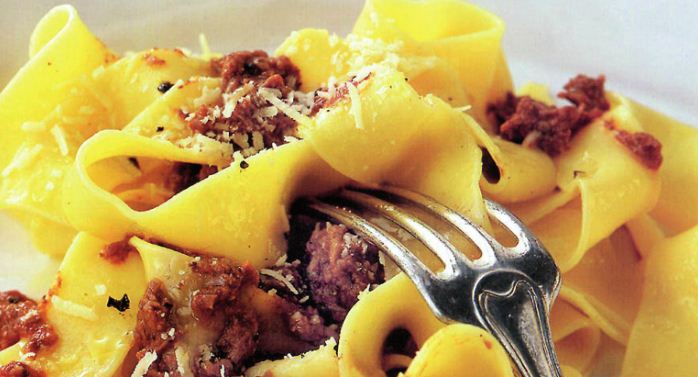
Food and drinks in the Tuscanian region tradition
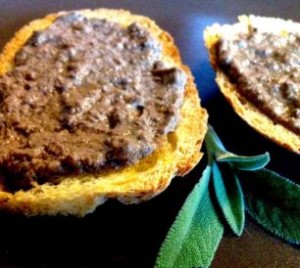 As in many other areas of Italy, Tuscany’s cuisine has a tradition that comes from simplicity but reveals all its taste in every dish. Several traditional soups, like the ‘acquacotta’ and the ‘ribollita’, come from peasant origins and today are appreciated for the genuine taste of their ingredients. Meat, also, has a central role in Tuscany’s cooking tradition, with the popular “Florentine steak” that is derived from the Chianina cattle breed, very common in this area of Italy, and also game products like wild boars, hares and pheasants that become often ingredients for delicious sauces that top the famous ‘pappardelle’ dishes. In October and November it’s also possible to taste the popular truffles of San Miniato used in various recipes. An important role in Tuscany’s menu is that of the starters, made of delicious ‘salumi’ and the famous ‘crostini toscani’, slices of bread topped with a delicious topping of onion and chicken liver-based pâté. Also, sweets are another taste of Tuscany everyone has to discover, like Siena’s ‘panforte’, the Florentine ‘schiacciata’ (with chocolate or grapes), and biscuits like Prato’s ‘cantucci’ (usually dip into the ‘Vinsanto’ liquor) or the ‘ricciarelli’ and ‘cavallucci’. Finally, don’t forget to taste the famous Tuscanian bread, whose absence of salt makes any other taste more evident.
As in many other areas of Italy, Tuscany’s cuisine has a tradition that comes from simplicity but reveals all its taste in every dish. Several traditional soups, like the ‘acquacotta’ and the ‘ribollita’, come from peasant origins and today are appreciated for the genuine taste of their ingredients. Meat, also, has a central role in Tuscany’s cooking tradition, with the popular “Florentine steak” that is derived from the Chianina cattle breed, very common in this area of Italy, and also game products like wild boars, hares and pheasants that become often ingredients for delicious sauces that top the famous ‘pappardelle’ dishes. In October and November it’s also possible to taste the popular truffles of San Miniato used in various recipes. An important role in Tuscany’s menu is that of the starters, made of delicious ‘salumi’ and the famous ‘crostini toscani’, slices of bread topped with a delicious topping of onion and chicken liver-based pâté. Also, sweets are another taste of Tuscany everyone has to discover, like Siena’s ‘panforte’, the Florentine ‘schiacciata’ (with chocolate or grapes), and biscuits like Prato’s ‘cantucci’ (usually dip into the ‘Vinsanto’ liquor) or the ‘ricciarelli’ and ‘cavallucci’. Finally, don’t forget to taste the famous Tuscanian bread, whose absence of salt makes any other taste more evident.
Main regional dishes of Tuscany
- Starters: Panzanella Toscana, Crostini alla Toscana, Arselle alla Viareggina (see also Cheese and Salumi for mixed starters)
- First Dishes: Pappa col Pomodoro, Ribollita, Pappardelle al Cinghiale, Minestra di Farro alla Toscana, Spaghetti Maremmani, Risotto con i Carciofi, Acqua cotta, Cavolo Nero con le Fette
- Second Dishes: Carpaccio alla Toscana, Trippa alla Fiorentina, Bistecca alla Fiorentina, Ribollita, Fagiano alla Fiorentina, Triglia/Tonno alla Livornese, Caciucco
- Side Dishes: Fagioli al Fiasco, Funghi in Fricassea alla Toscana, Cipollata Senese, Cipolle alla Grossetana
- Cheese and Salumi: Pecorino Toscano (Pecorino di Pienza, Grande Vecchio di Montefollonico, Pecorino stagionato infoglie di noce), Raviggiolo, Marzolino, Brusco e Caciotta, Ricotta di Pecora, Stracchino, Lardo di Colonnata, Pancetta Stesa, Finocchiona, Sbriciolona, Lardo alle Erbette, Salsicce di Cinghiale, Cinta Senese
- Sweets: Scarpaccia Viareggina, Torta alla Senese, Budino di riso toscano, Castagnaccio alla Fiorentina, Brigidini Toscani, Panforte di Siena, Torrone, Schiacciata Fiorentina, Torta di riso
- Fruit
- Coffee
- Amaro/Grappa and other liquors: Grappa di Chianti, Grappa di Morellino di Scansano, Grappa di Brunello, Grappa di Vinaccia, Amaro/China Clementi, Biadina, Alkermes di Firenze, China Massagli, Aspretto di More
Main Tuscany’s regional wines:
Carmignano, Brunello di Montalcino, Vino Nobile di Montepulciano, Chianti and Chianti Classico, Vernaccia di San Gimignano, Bianco di Pitigliano, Morellino di Scansano, Ornellaia, Grechetto, Vinsanto

Food and drinks in Florentine tradition
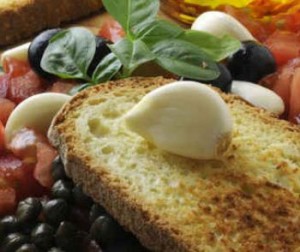 Florence being the heart of Tuscany, all major traditions influence its cuisine from starters to sweets, and the same happens with wines and liquors. Soups and meat, the latter often from game meat products, are often found in the Florentine menu. The T-bone steak of Chianina known as ‘Bistecca alla Fiorentina’, for example, cooked over charcoal or the ‘tagliata’, sliced rare beaf served on a bed of arugula, often with slices of Parmesan cheese on top, are two typical dishes of the Florentine tradition. The use of vegetables in delicious soups are also very important in Florentine dishes, and their taste is enriched by the quality of local fresh olive oil. Less common in Florence’s menus are fish dishes, besides Sword Fish, but you can ask for them anyway. Of course the richness of cheese and salumi has an important role both in the starters and in the final part of the meal, before fruit and sweets are served.
Florence being the heart of Tuscany, all major traditions influence its cuisine from starters to sweets, and the same happens with wines and liquors. Soups and meat, the latter often from game meat products, are often found in the Florentine menu. The T-bone steak of Chianina known as ‘Bistecca alla Fiorentina’, for example, cooked over charcoal or the ‘tagliata’, sliced rare beaf served on a bed of arugula, often with slices of Parmesan cheese on top, are two typical dishes of the Florentine tradition. The use of vegetables in delicious soups are also very important in Florentine dishes, and their taste is enriched by the quality of local fresh olive oil. Less common in Florence’s menus are fish dishes, besides Sword Fish, but you can ask for them anyway. Of course the richness of cheese and salumi has an important role both in the starters and in the final part of the meal, before fruit and sweets are served.
Main Florentine dishes:
- Starters: Panzanella Toscana, Crostini alla Toscana (see also Cheese and Salumi for mixed starters)
- First Dishes: Risotto Nero alla Fiorentina, Pappa col Pomodoro, Ribollita, Pappardelle al Cinghiale, Minestra di Farro alla Toscana, Spaghetti Maremmani, Risotto con i Carciofi, Acqua cotta, Cavolo Nero con le Fette
- Second Dishes: Pollo alla Fiorentina, Costata di Manzo alla Fiorentina, Stracotto di Manzo alla Fiorentina, Trippa alla Fiorentina, Bistecca alla Fiorentina, Ribollita, Lampredotto, Fagiano alla Fiorentina, Pesce Spada alla Fiorentina, Tagliata
- Side Dishes: Uova alla Fiorentina, Funghi in Umido, Funghi in Fricassea, Carciofi alla Toscana, Cardo alla Toscana
- Cheese and Salumi: Pecorino, Caciotta, Ricotta di Pecora, Stracchino, Lardo di Colonnata, Pancetta Stesa, Finocchiona, Sbriciolona, Salsicce di Cinghiale
- Sweets: Budino di riso toscano, Castagnaccio alla Fiorentina, Brigidini Toscani, Schiacciata Fiorentina, Torta di riso
- Fruit
- Coffee
- Amaro/Grappa and other liquors: Grappa di Chianti, Grappa di Vinaccia, Amaro/China Clementi, Biadina, Alkermes di Firenze, China Massagli, Aspretto di More
Main Florentine drinks
- wine
- beer
- water

